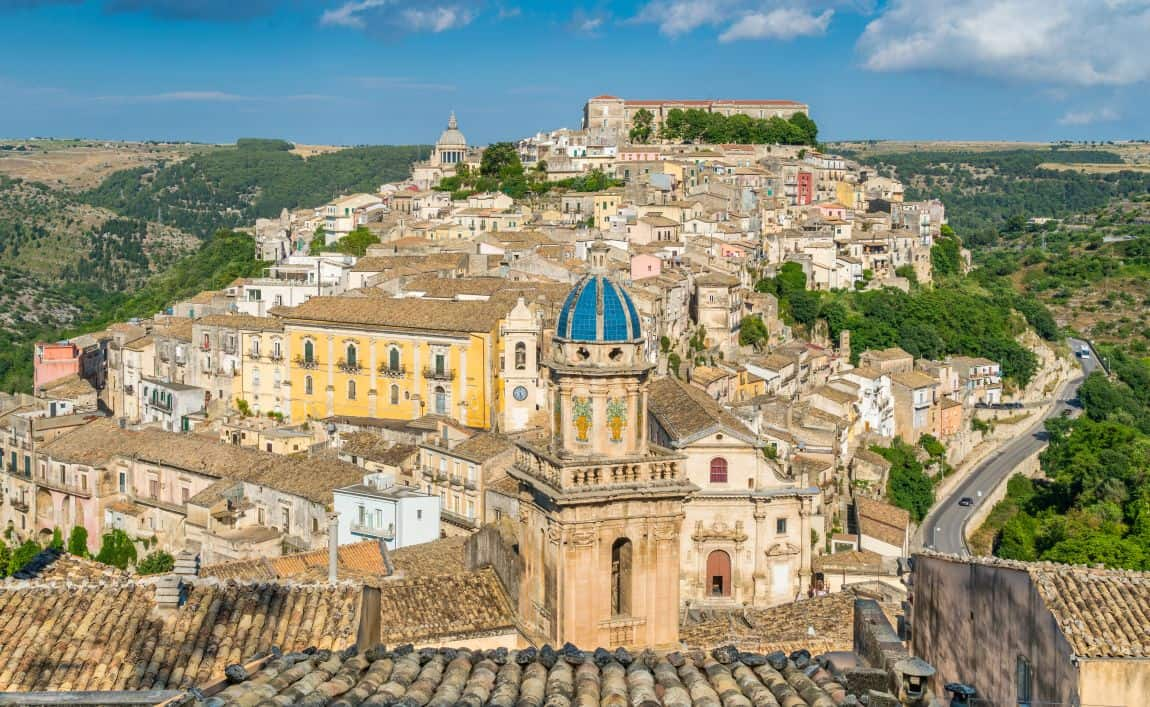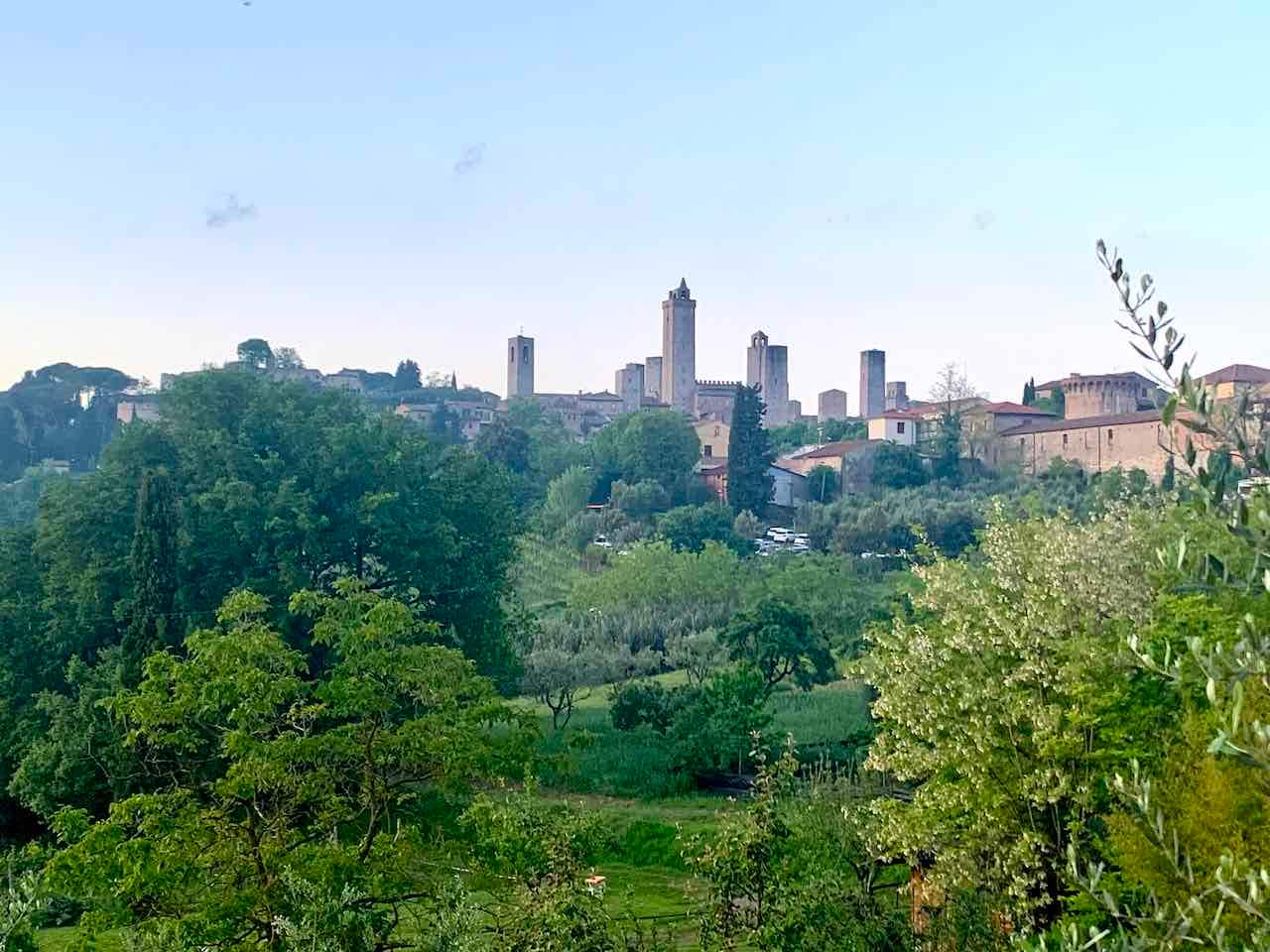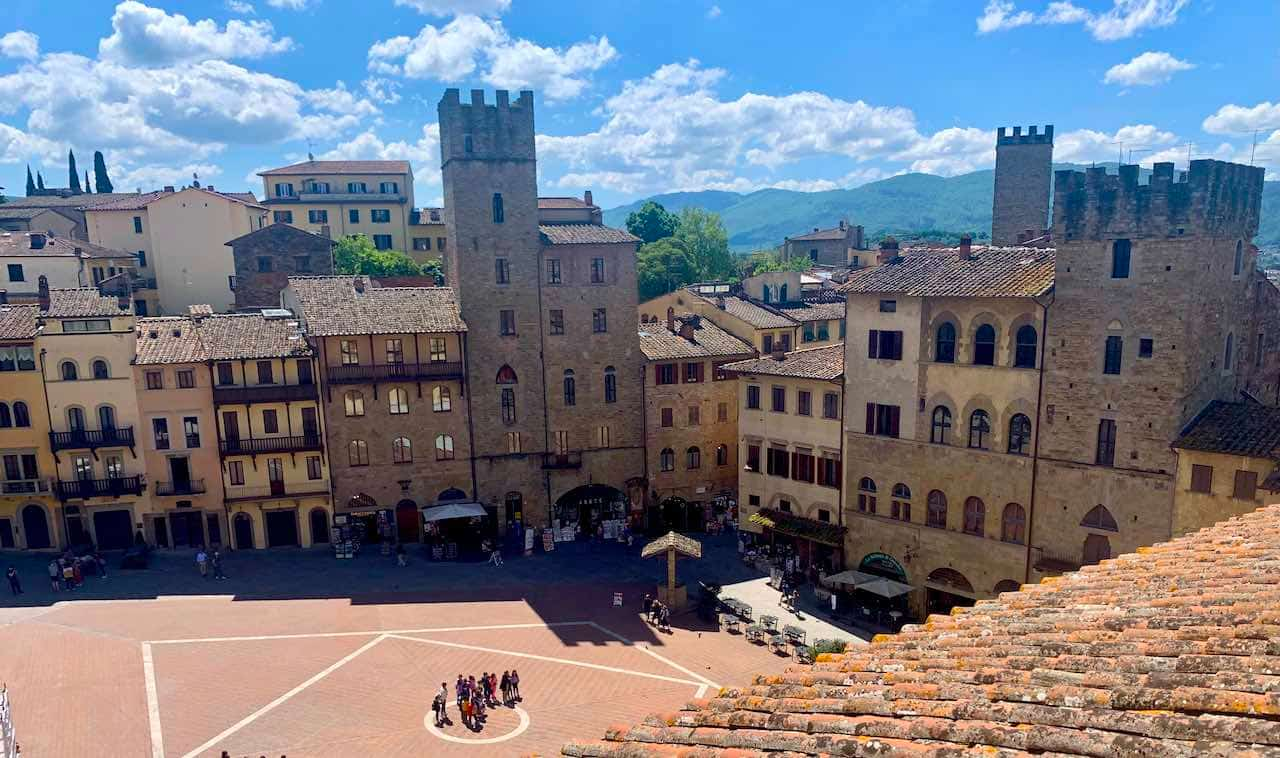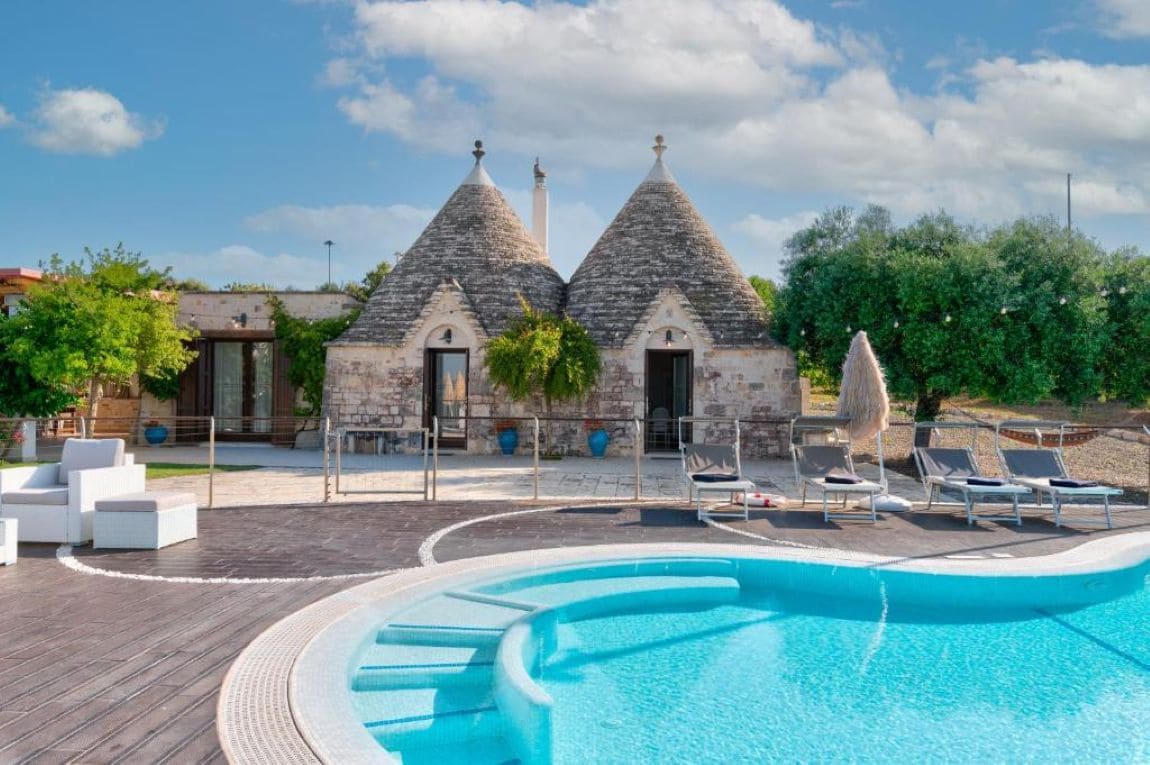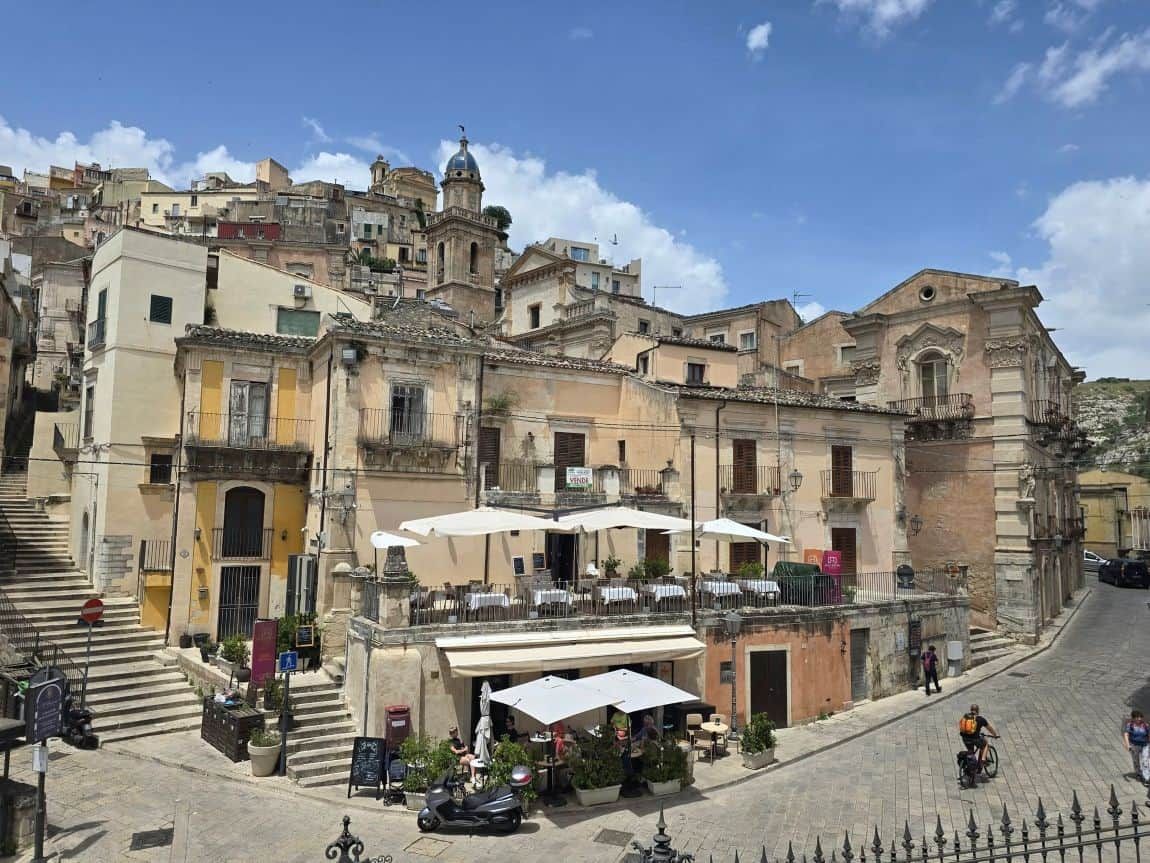Selinunte Sicily: The Forgotten Greek City That’s Better Than Agrigento
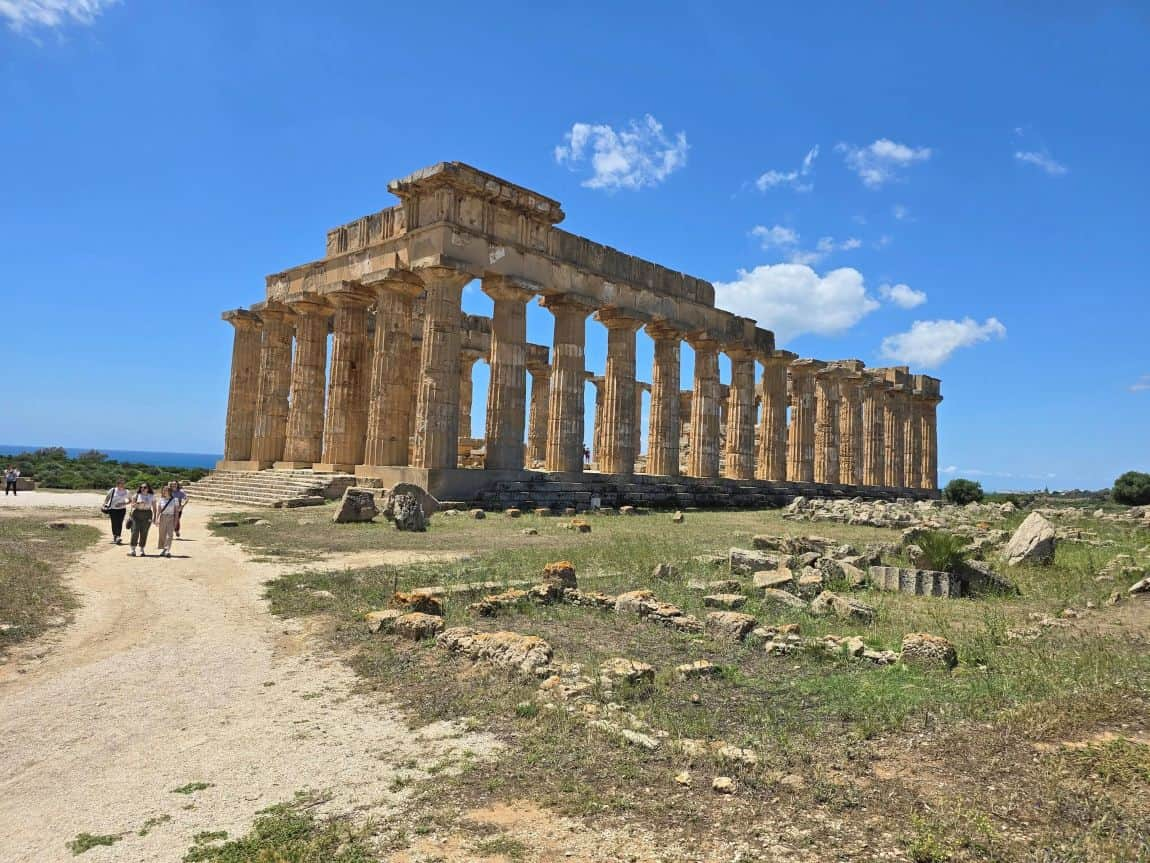
Discover Selinunte Sicily: The Ultimate Guide to The Most Beautiful Ancient Ruins in Italy!
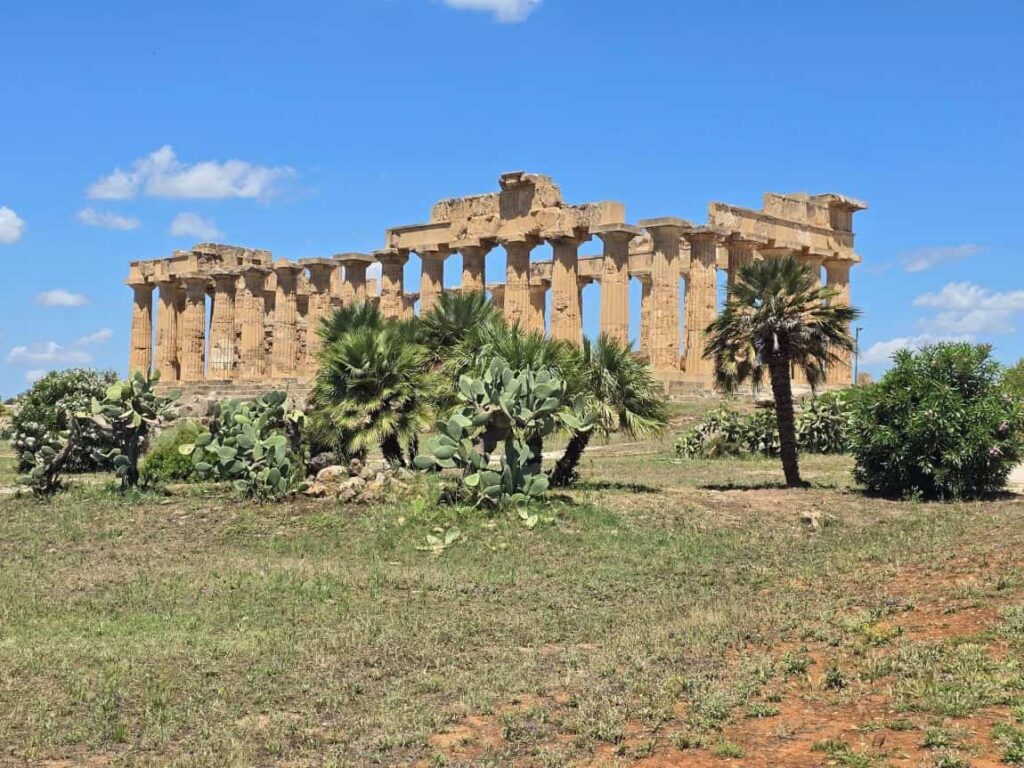
On my recent road trip through Sicily—a journey filled with historical treasures, stunning coastal towns, and postcard-perfect beaches —one place completely took me by surprise: Selinunte Archaeological Park. I can say, without hesitation, it was one of the highlights of the entire trip. While the Valley of the Temples in Agrigento often gets more attention, Selinunte captured my imagination in a way that few places do. Massive ancient Greek temples standing over the sea, wildflowers growing between sun-bleached ruins, and almost no crowds in sight—Selinunte felt like stepping into a forgotten world, one that was just waiting to be discovered.
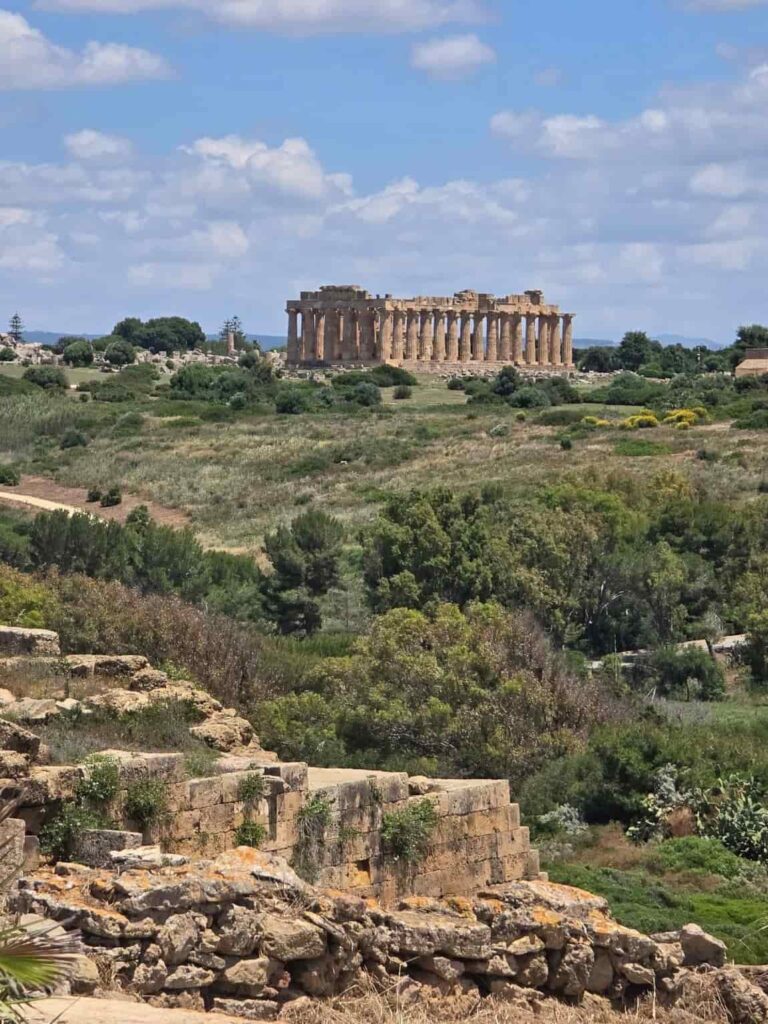
THIS POST MAY CONTAIN COMPENSATED LINKS. PLEASE READ MY DISCLAIMER FOR MORE INFO.
What Is Selinunte Archaeological Park?
Selinunte Italy is one of the largest archaeological parks in Europe and without a doubt, one of the most spectacular. Stretching over 270 hectares on Sicily’s southwestern coast, the park is home to the ruins of an ancient Greek city, including seven temples, fortifications, residential areas, necropolises, and a sanctuary.
Despite its extraordinary significance, Selinunte has not yet been named a UNESCO World Heritage Site. But don’t be fooled—this is not because it lacks the qualifications, but because the Italian government has yet to submit the nomination. Trust me, if Selinunte were located anywhere else, it would be world-famous. Its beauty, scale, and setting are nothing short of breathtaking.
Why Visit Selinunte?
Selinunte offers a raw, authentic archaeological experience. Here, you can walk among ruins without crowds, touch stones carved over 2,500 years ago, and take in sweeping views of the Mediterranean while standing beneath towering Doric columns. It’s majestic, serene, and mysterious all at once.
And unlike the Valley of the Temples, where paths can be more structured and busy, Selinunte feels wild—almost like you’ve stumbled upon something long lost. In fact, I found it more atmospheric and less touristy than the Valley of the Temples in Agrigento. You truly get a sense of the grandeur of ancient Greece—and you don’t have to fight for a photo.
Where Is Selinunte?
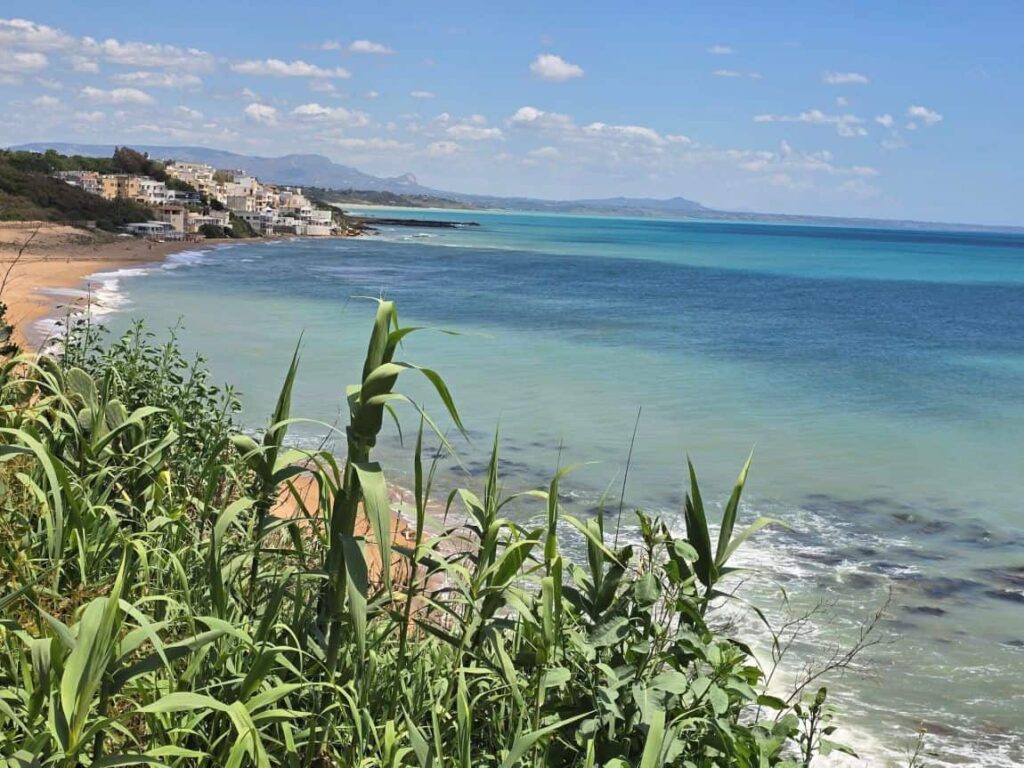
Selinunte lies on the southwestern coast of Sicily, near the small seaside village of Marinella di Selinunte, within the province of Trapani. It’s about 90 minutes by car from Palermo and about an hour from Trapani. Its coastal location is part of the magic—you’ll see the sea from many of the temple sites, just as the ancient Greeks did.
A Brief History of Selinunte
If you’re drawn to places where ancient history seems to echo through the ruins, Selinunte Sicily will not disappoint. This ancient city, once a thriving hub of Greek civilization, holds one of the most dramatic and turbulent stories of any archaeological site in Europe. Walking through the windswept remains of Selinunte, it’s hard not to feel the weight of time—and the power struggles that shaped not just Sicily, but the entire Mediterranean world.
Founded in circa 628 BCE by settlers from Megara Hyblaea (a Greek colony near modern-day Augusta in eastern Sicily), Selinunte quickly rose to prominence thanks to its strategic coastal position between the Carthaginian-controlled west and the Greek-held east. It was the westernmost Greek colony in Sicily, positioned at the cultural and political crossroads of the island. The city took its name from “selinon,” the ancient Greek word for wild parsley, which still grows in the area today.
At its peak during the 6th and 5th centuries BCE, Selinunte Sicily was home to 30,000 residents, making it one of the largest and wealthiest Greek cities in Sicily. Its impressive temples, many dedicated to gods like Zeus, Hera, and Apollo, reflected not only religious devotion but also the city’s political power and artistic achievement. Monumental architecture was used as a statement of dominance—and Selinunte had no shortage of that.
But with great power came dangerous enemies. In 409 BCE, after a series of alliances and betrayals, Carthage launched a devastating attack on Selinunte. According to ancient historian Diodorus Siculus, the siege lasted just nine days before Carthaginian forces breached the city’s defenses. In a brutal onslaught, thousands of residents were massacred—bout 12.000 men were killed while women and kids were taken into slavery. The city was razed.
Though partially rebuilt under Carthaginian rule, Selinunte never fully regained its former glory. Earthquakes and further conflict in the centuries that followed eventually led to its complete abandonment by the 3rd century BCE. For nearly 2,000 years, Selinunte Italy was forgotten—buried under layers of earth and history.
It wasn’t until the 19th century that European archaeologists rediscovered Selinunte, uncovering its massive temple ruins and intricate city plan. Since then, it has become one of the most important archaeological sites in the Mediterranean, offering extraordinary insights into ancient urban planning, religion, and art.
Today, visitors to Selinunte Sicily can explore a city that once stood as a beacon of Greek civilization, now preserved in time. The park gives us access not only to the monumental temples, but also to fortification walls, ancient houses, and sacred sanctuaries—pieces of a complex puzzle that once formed a sophisticated and vibrant society.
While Selinunte Italy may not be as globally recognized as Pompeii or Agrigento, its historical significance is immense. And what makes it even more special is the ability to experience this incredible heritage without the crowds, in a natural setting that has remained largely unchanged since antiquity.
Whether you’re a history buff, archaeology lover, or simply looking for a unique stop on your Sicilian road trip, Selinunte Sicily offers a window into a lost world—one that shaped the history of the island and continues to captivate those who walk its ancient paths.
What to See in Selinunte Archaeological Park
Visiting Selinunte Archaeological Park is like stepping into an open-air museum of the ancient Greek world. The park is vast—over 270 hectares—and home to some of the most majestic Greek Doric-style temples in the Mediterranean, along with a fortified acropolis, city ruins, sanctuaries, and a museum. Spread across five key zones, the ruins of Selinunte Sicily paint a vivid picture of what life might have looked like in this once-thriving Greek city.
The park is vast, and divided into five main areas, each with unique highlights. If you’re up for walking and some time-traveling, here’s what to explore:
1. The Acropolis: The Beating Heart of Ancient Selinunte

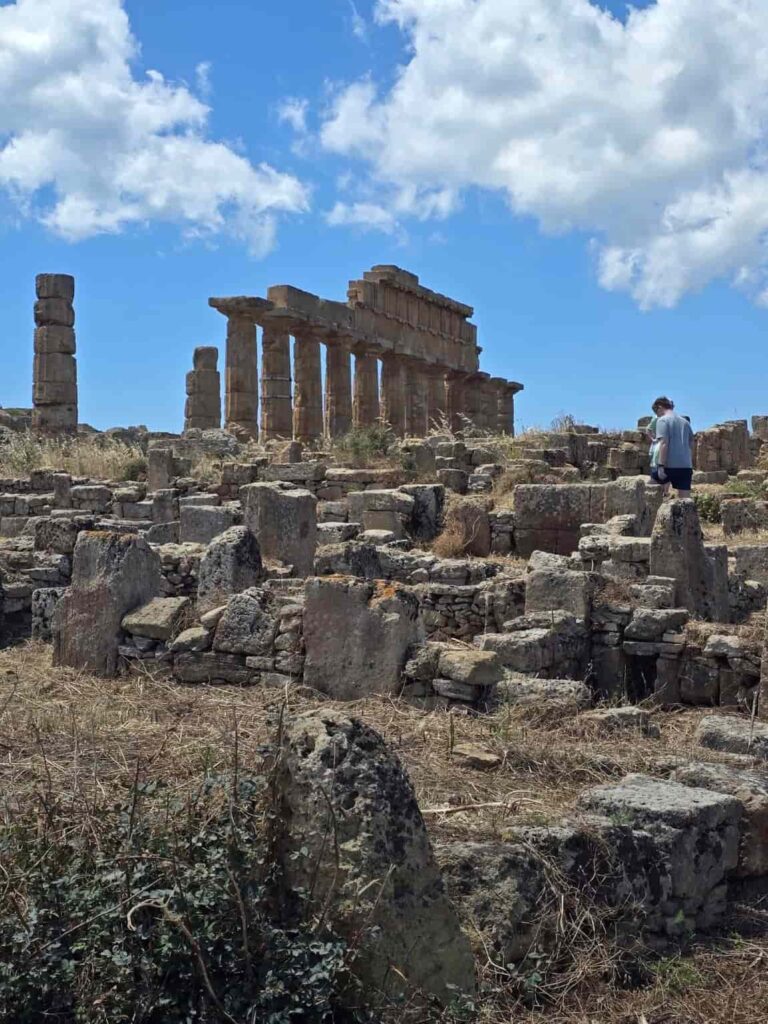
At the center of the park, perched on a rocky cliff overlooking the sea, lies the Acropolis—the spiritual and political heart of ancient Selinunte Sicily. This area is enclosed by thick fortification walls and was once a bustling urban center, featuring sacred temples and city gates. It’s arguably the most atmospheric part of the park, where you can really feel the city’s former grandeur.
The Acropolis houses several major temples:
- Temple D, likely dedicated to Poseidon, stands on a raised platform with elegant columns that echo the power of the sea god.
- Temple A is thought to honor the Dioscuri—Castor and Pollux, the twin sons of Zeus.
- Temple C is perhaps the most iconic here, possibly dedicated to Apollo, and it remains the oldest temple in the park.
This area also features visible remains of city streets, residential buildings, and strong defensive walls that highlight Selinunte’s strategic importance. A small café nearby offers a welcome break with scenic views.
2. Mannuzza Hill: Everyday Life in Ancient Selinunte
North of the Acropolis lies Mannuzza Hill, a quieter and less-visited part of the site, but one that offers valuable insight into everyday life in ancient Selinunte Italy. Here you’ll find the foundations of ancient houses, cisterns, and possibly public buildings—remnants of the residential zone that once supported the temples and the elite ruling class.
Though not as visually dramatic as the temples, Mannuzza Hill offers a different kind of experience: a chance to walk the same streets and courtyards where ordinary people lived, cooked, and raised families. Archaeologists believe this area was once a densely populated neighborhood, making it a key part of understanding the urban layout of ancient Selinunte.
3. East Hill: Home of the Great Temples
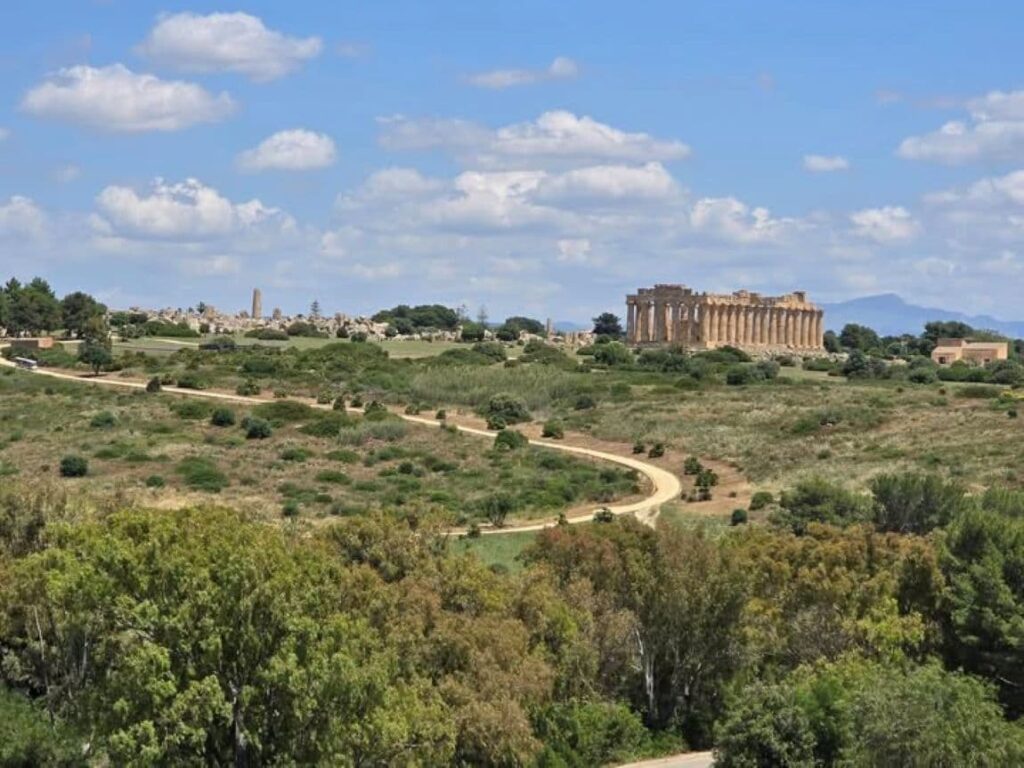
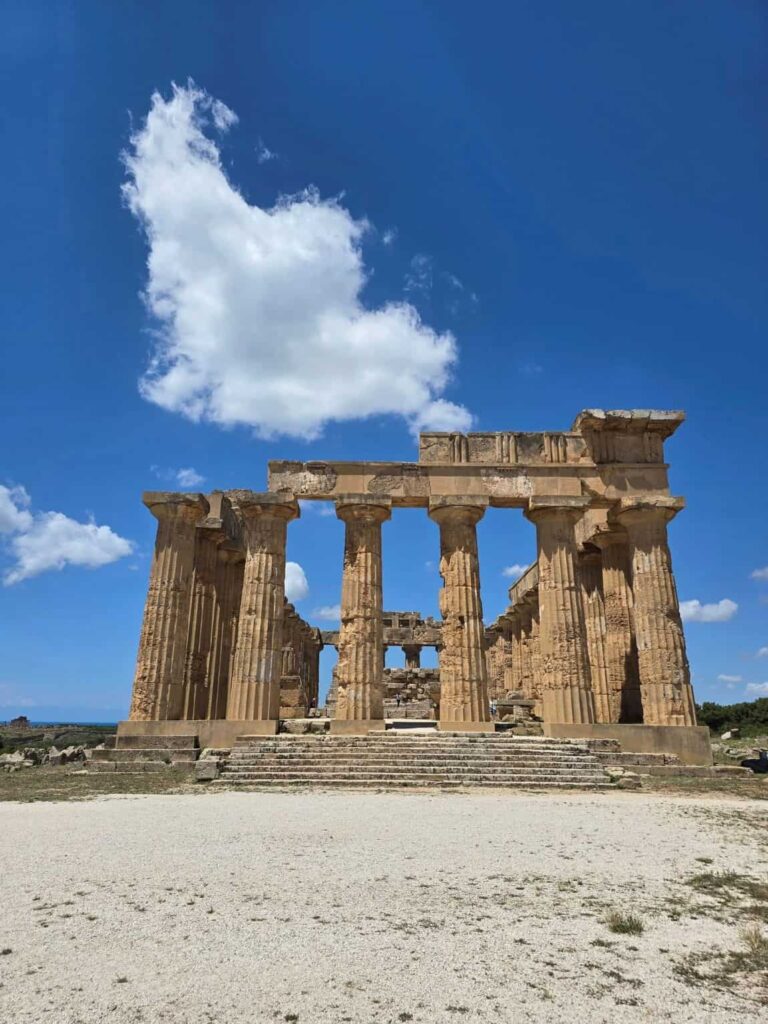
The East Hill is often the starting point for visitors, located near the park’s main ticket office. This area contains some of the largest and most impressive temples in Selinunte Sicily, including:
- Temple E, likely dedicated to Hera or Aphrodite, is the most restored and photogenic structure in the park. Its towering Doric columns give a powerful sense of the scale and artistry of Greek temple design.
- Temple F, possibly honoring Dionysus or Athena, lies in ruins but still showcases intricate column drums and base structures.
- Temple G was a true giant—one of the largest Greek temples ever built, possibly dedicated to Zeus. Though incomplete and mostly collapsed, the sheer scale of its remaining stones is jaw-dropping.
The East Hill is perfect for photography, especially in the early morning or late afternoon when the golden light brings out the texture of the limestone. Standing among these temples is an unforgettable reminder of Selinunte, Italy’s former power and ambition.
4. Gaggera Hill: Sanctuary and Sacred Rituals
West of the Acropolis lies Gaggera Hill, home to several important religious sanctuaries. This area may be less visually dramatic than the temple zones, but it’s archaeologically rich and spiritually significant.
Here you’ll find the Sanctuary of Demeter Malophoros, one of the oldest religious sites in the area. Dedicated to Demeter, the goddess of fertility and agriculture, this sanctuary was a place of offerings and rituals—especially by women hoping for blessings of fertility. Numerous terracotta figurines, vases, and altars have been discovered here.
Also located in this area are:
- Temple M, is actually a monumental fountain in the Doric style
- The Sanctuary of Hera, which lies nearby and may have once hosted public ceremonies and processions.
While Gaggera Hill is archaeologically important, some visitors may find it less engaging than the temples. If you’re short on time, you can skip it—but be sure to visit the museum to see the artifacts found here.
5. The Necropolis: City of the Dead
Scattered across the outer edges of the site are several necropolis zones, where the ancient inhabitants of Selinunte Sicily buried their dead. These areas are less developed for tourism but hold deep historical value. Graves range from simple tombs to family burial chambers, giving us insight into class structure, funerary rituals, and beliefs about the afterlife.
The necropolis sites are quiet, peaceful, and often overlooked—but they complete the story of life and death in Selinunte Italy. They remind us that this was once a thriving city with a fully functioning society—from monumental temples to humble graves.
The Baglio Florio Museum: A Must-Visit
To round out your visit, don’t miss the Baglio Florio Museum, located near the park’s western entrance. It brings the ruins to life, showcasing objects recovered from the site, including pottery, sculpture fragments, inscriptions, and religious artifacts. It offers valuable context to everything you’ve just seen in the field—and a glimpse into the artistry and beliefs of the people who once walked these streets.
The Temples of Selinunte
The temples of Selinunte Sicily are among the most impressive remains of the ancient Greek world—not just for their sheer size, but for what they reveal about the culture, religion, and ambition of the people who built them. Constructed between the 6th and 5th centuries BCE, these temples were not only sacred places of worship but also powerful symbols of civic pride and political might. Even in their ruined state, they command awe.
Most of the temples were built in the Greek Doric style, characterized by fluted columns, simple capitals, and symmetrical proportions. Here’s an in-depth look at the main temples in Selinunte Italy, located in the Acropolis and East Hill zones.
1. Temple E – The Crown Jewel of Selinunte Sicily
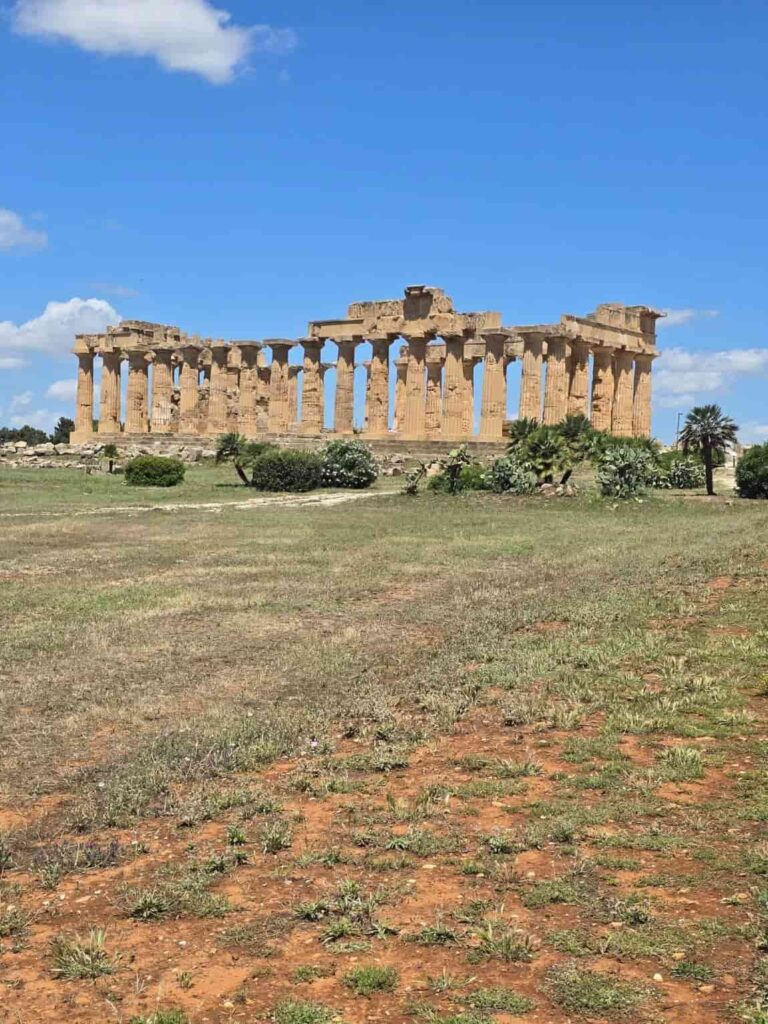
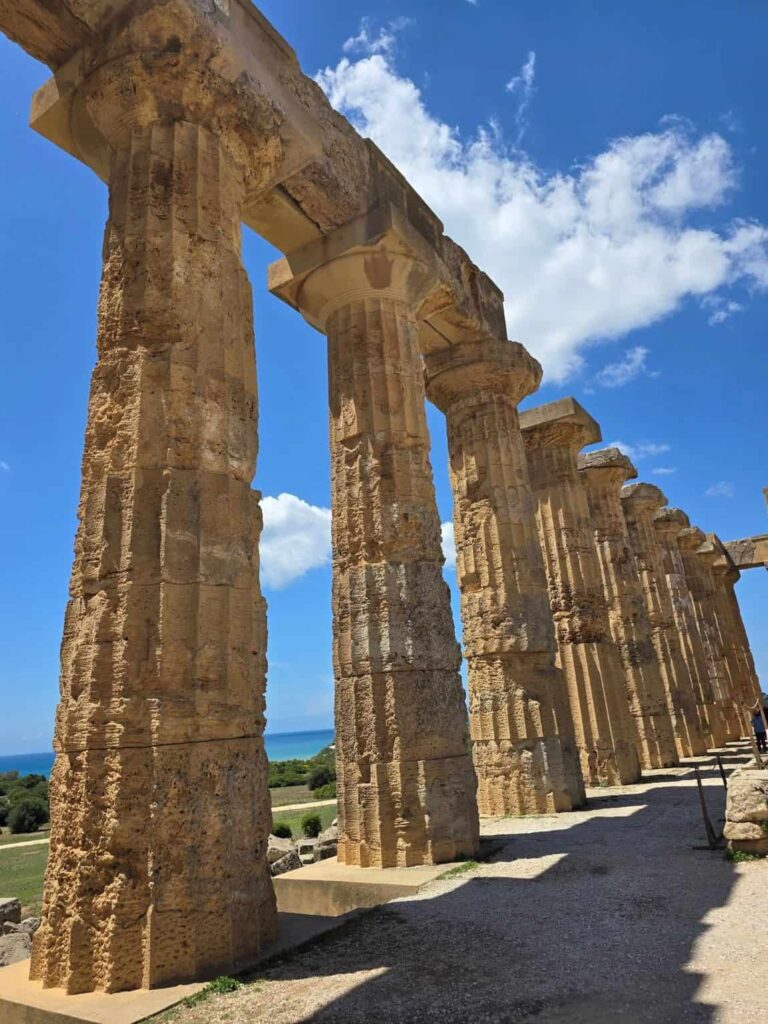
Located on the East Hill, Temple E is one of the most striking and complete temples in Selinunte Italy. Likely dedicated to Hera (some scholars suggest Aphrodite), it was built around 460 BCE and partially reconstructed in the 20th century. Today, it stands as the most iconic symbol of Selinunte.
This temple’s proportions are classic Doric: six columns across the front and 15 along the sides. As you walk through it, you’ll notice how the temple aligns perfectly with the sun at certain times of day—a deliberate choice in ancient Greek religious architecture. Temple E is a favorite for photography, particularly in the golden light of morning or late afternoon.
2. Temple F – A Temple Shrouded in Mystery

Just a few steps from Temple E lies the smaller and more ruined Temple F, built around 550 BCE. Scholars believe it may have been dedicated to Dionysus, the god of wine and theater, or possibly Athena, goddess of wisdom and war. Unlike Temple E, this temple hasn’t been restored, so much of it lies in pieces on the ground.
Still, you can see the remnants of its altar and column bases, and it offers a powerful glimpse of the destructive forces—like earthquakes and invasions—that shaped the fate of Selinunte Sicily.
3. Temple G – One of the Largest Temples in the Ancient World
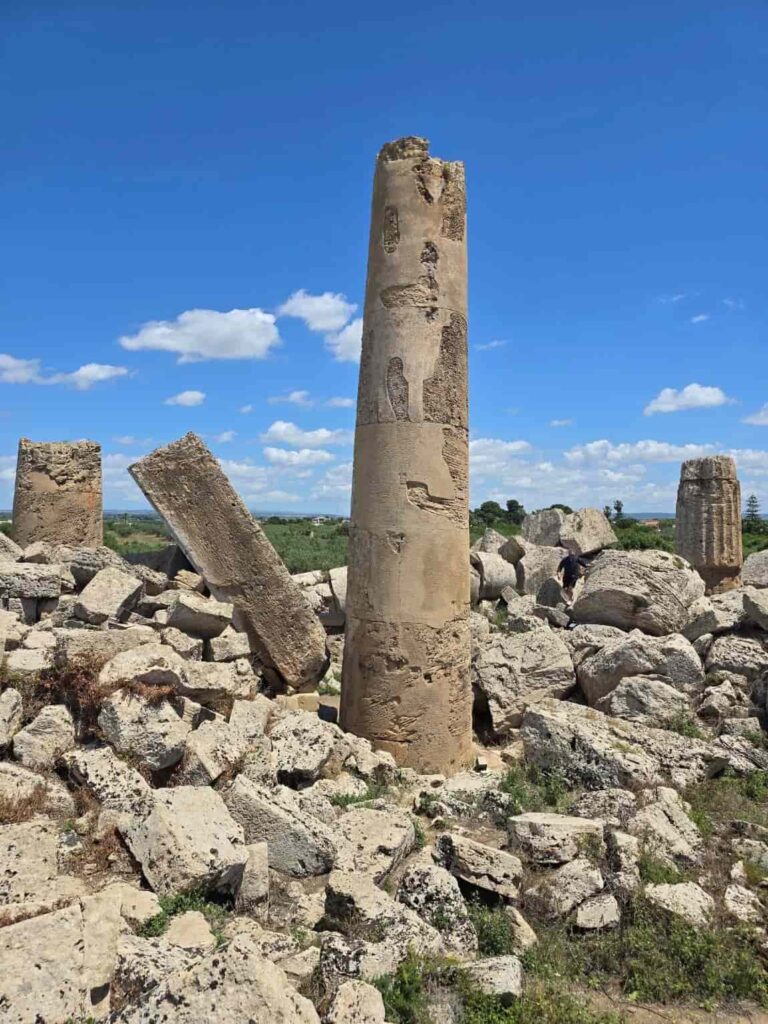
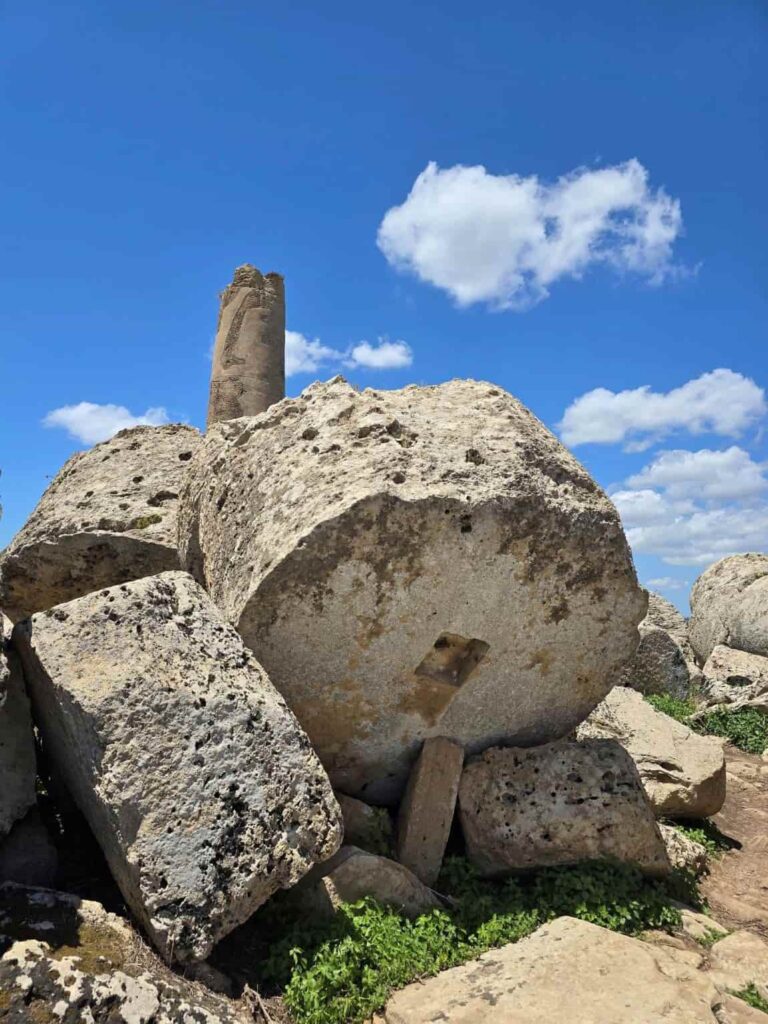
Temple G was the largest and most ambitious temple in the entire park—and one of the largest in the ancient Greek world. Likely dedicated to Zeus, this temple was begun in the 6th century BCE but was never completed. Had it been finished, its scale would have rivaled that of the great temples in Athens or Ephesus.
The sheer size of its fallen columns and massive foundation blocks is staggering. Some column drums weigh over 20 tons each. Walking among these ruins gives you a real sense of ancient Selinunte’s vision and power. Temple G speaks to the city’s ambition—and perhaps its overreach—as construction may have stopped due to war or lack of resources.
4. Temple C – The Oldest Surviving Temple on the Acropolis
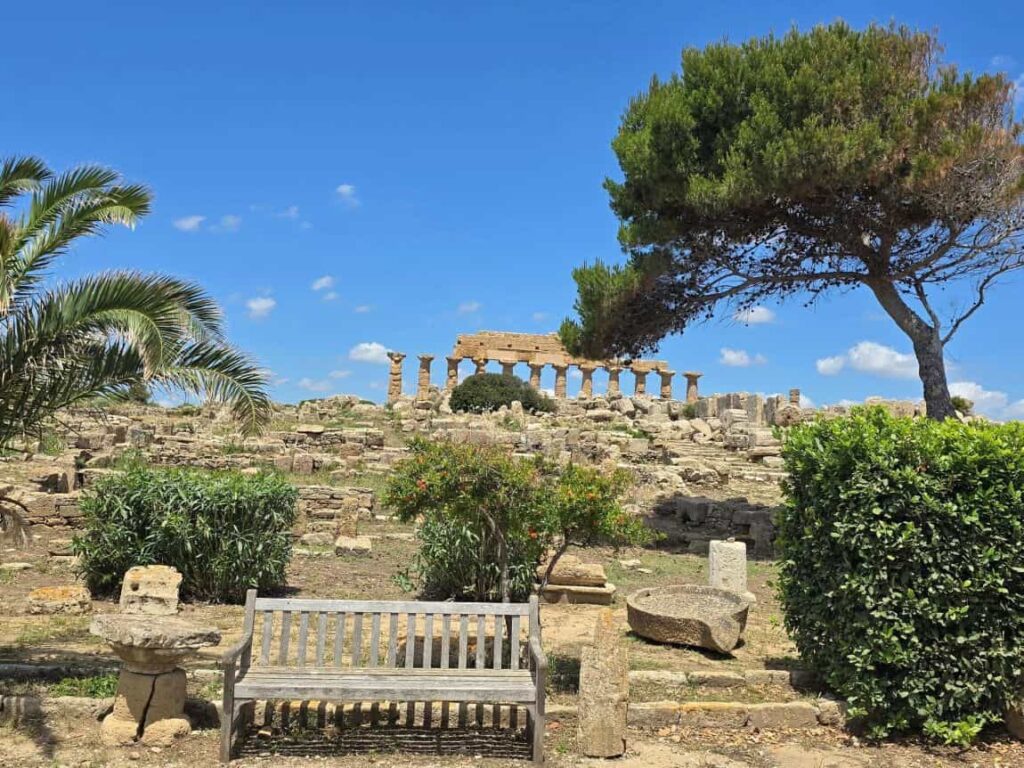
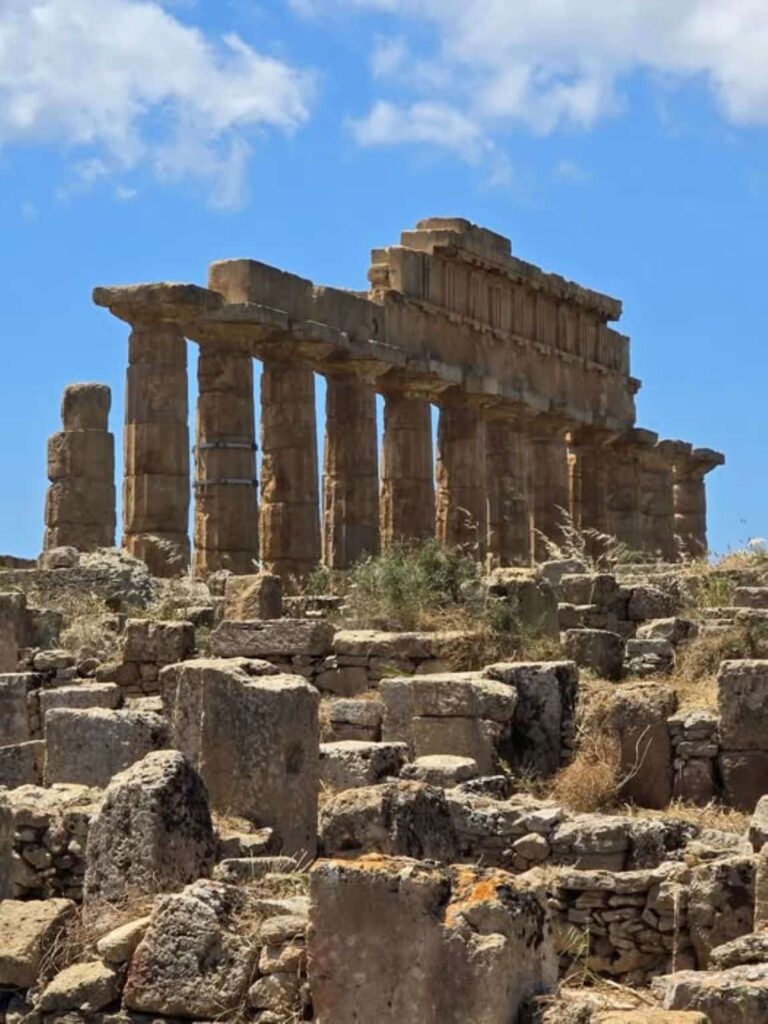
Over on the Acropolis, Temple C is the oldest and best-preserved temple in the Acropolis area of Selinunte Italy. Built around 550 BCE, it may have been dedicated to Apollo, the god of light, music, and prophecy. Unlike some of the later temples, Temple C features a slightly irregular layout and heavier proportions, showing an early phase of Doric architecture.
Today, its partially restored colonnade rises dramatically above the surrounding ruins. Temple C provides one of the best photo opportunities in the park and offers insight into the early architectural techniques of the Selinuntines.
5. Temple D – A Maritime Offering to Poseidon
Also located on the Acropolis, Temple D is thought to have been built in honor of Poseidon, the god of the sea. Given Selinunte’s status as a powerful port city, it’s no surprise that Poseidon would be honored with a grand temple overlooking the Mediterranean.
Though in ruins today, you can still trace the temple’s floorplan and see the scattered column pieces that once supported its massive roof. From Temple D, the sea is visible just beyond the cliffs—a powerful setting for the god of the oceans.
6. Temple A – Dedicated to the Dioscuri
Temple A, adjacent to Temple D, was likely built to honor the Dioscuri—Castor and Pollux, the twin sons of Zeus and patrons of sailors. This smaller temple was part of a complex of shrines that likely served both civic and religious purposes. Though much of the structure is collapsed, archaeologists have identified clear patterns in its layout and remnants of painted terracotta decorations.
7. Temple B – Lesser Known, But Historically Valuable
These two smaller temples on the Acropolis are less well-known, and their dedications remain uncertain. Temple B, built later than the others (possibly in the Hellenistic period), was unique for having a cult statue base, suggesting a more intimate or personal form of worship. It is believed to have been dedicated to Demeter, the ancient Greek goddess of the harvest, agriculture, and the fertility of the earth.
Facilities at the Park
Selinunte is well-equipped for visitors. There’s a ticket office at the main entrance, a small café near the Acropolis where you can grab a sandwich or espresso with a view, and the Baglio Florio Museum. Don’t miss the museum—it’s filled with fascinating finds from the site, including pottery, broken vases, statues, and architectural fragments that help bring the city’s history to life.
How to Get to Selinunte
If you’re driving, Selinunte is an easy stop between Trapani and Agrigento or en route from Palermo. I visited Selinunte on my way from Trapani to Agrigento. Public transportation is limited, so a car is highly recommended. Check out affordable rental cars at Palermo Airport here and Catania Airport here.
Alternatively, consider guided tours, which include transport and historical insight:
- Segesta and Selinunte Full-Day Tour from Trapani
- Visit Segesta and Selinunte from Trapani (Private Tour)
- From Palermo: Archaeological Park Tour of Selinunte and Mazara del Vallo
- Selinunte and Segesta Private Discover Tour – from Palermo with Guide Driver
Getting Around the Park
You can walk the entire park, but be ready for uneven terrain and some distance between key areas. Alternatively, hop on the electric shuttle (golf cart). There are two main routes:
- €8 for the standard route between the East Hill and the Acropolis,
- €12 for the longer route, which also includes Gaggera Hill and the museum.
How to Visit Selinunte Archeological Park
Start your visit at the ticket office, then head to East Hill to admire Temples E, F, and G. From there, either walk or take the shuttle to the Acropolis. Don’t miss Temple C—it’s the most intact and deeply atmospheric. If you still have energy, continue to Gaggera Hill (though honestly, unless you’re a completist, you can skip this part) and instead finish at the Baglio Florio Museum, which is absolutely worth your time.
Best Time to Visit
Spring and autumn are ideal—think April to early June, or September to October. The weather is warm but not scorching, and the wildflowers are often in bloom. Avoid the peak of summer if you can—Selinunte is exposed, with little shade. I visited Selinunte in mid-May. It was warm but not melting hot. A perfect time for visiting Selinunte Sicily!
How Much Time to Spend at Selinunte
Plan to spend at least 3 to 4 hours exploring the site, more if you’re passionate about history or photography. It’s a large area, and taking your time allows you to really absorb its atmosphere.
Where to Stay
The charming coastal village of Marinella di Selinunte is right next door. It has lovely B&Bs, beachside restaurants, and a relaxed vibe. Staying nearby allows you to visit the ruins early or late in the day when the light is magical and the crowds are minimal.
For a luxury stay near Selinunte Sicily, Momentum Wellness Bioresort offers elegant rooms, a stunning pool, and a peaceful setting surrounded by olive groves. For a mid-range option, Villa Patrizia Selinunte is a guest favorite with sea views, great breakfasts, and walking distance to the park. Budget travelers will appreciate Hotel Alceste, a clean and friendly hotel just a few minutes from the archaeological site.
All three options offer convenient access to Selinunte and the charming seaside village of Marinella di Selinunte.
Opening Times of the Selinunte Archeological Park
Selinunte Archaeological Park is open year-round:
- Sept 16 – Oct 28: 09:00–18:00 (last ticket 17:00)
- Oct 29 – Mar 15: 09:00–17:00 (last ticket 15:30)
- Mar 16 – Apr 30: 09:00–19:00 (last ticket 18:00)
- May 1 – Sept 15: 09:00–20:00 (last ticket 19:00)
Tickets and Entry
General entry to the park is €14.
Shuttle service: €8 (short route) or €12 (longer route).
You can buy tickets in advance online with the Selinunte: Archaeological Park Entry Ticket & App Audioguide—a great option if you want to skip the lines and get insights as you walk.
Tips for Visiting the Selinunte Archeological Park
- Bring water, sunscreen, and a hat—there’s little shade.
- Wear good walking shoes—you’ll be on rocky paths and uneven ground.
- Visit in the early morning or late afternoon for better light and fewer crowds.
- Don’t skip the museum—it adds depth to what you see outdoors.
Nearby Places to Explore
- Scala dei Turchi (85 km; 1 h 10 min)– A dramatic white cliff cascading into the sea. Read more: The Complete Guide to Visting Scala dei Turchi, Sicily!
- Mazara del Vallo (35 km; 30 min) – A picturesque coastal town with Arab-Norman charm
- Segesta (60 km; 40 min) – Another ancient Greek site with a beautiful temple and amphitheater.
Read more about Segesta, Sicily! - Trapani (92 km, 1 h) and Erice – For medieval charm and sea views.
Read more Unmissable Things to Do in Trapani, Sicily, and 13 Bucket List Things to Do in Erice, Sicily!
Final Thoughts
Selinunte Sicily is a place that stays with you. It’s wild, majestic, and utterly unforgettable. If you’re planning a trip through Sicily and love history, ancient architecture, or off-the-beaten-path wonders, this is one destination you absolutely can’t miss.
While Selinunte Italy may not yet have UNESCO status, it has something even more rare—authentic magic, waiting quietly under the Sicilian sun.
- The Most Luxurious Secret Castle Hotels in Italy: Romantic Escapes You Won’t Believe You Can Stay In - November 14, 2025
- Vienna, Where Time Waltzes — The Most Magical Things to Do in Vienna, Austria - November 8, 2025
- The Prettiest Castle Hotels in Scotland You’ll Want to Book Right Away - November 7, 2025

